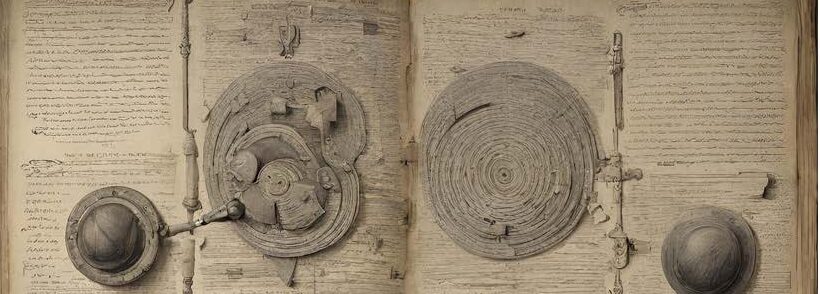I would imagine that if you could understand morse code, a tap dancer would drive you crazy.
– Mitch Hedberg

What is Morse Code?
Morse code was developed in the early 1830s by Samuel Morse and Alfred Vail for use with their telegraph system, which allowed long-distance communication over wires (Rafferty, 2023). It is a method of encoding text characters as sequences of two different signal durations, such as dots and dashes or short and long electrical signals. Each letter and number had a specific signal code assigned to it; a combination of dashes (-) and dots (.). For instance, the phrase “Morse Code” would be written as such “–/—/•-•/•••/• -•-•/—/-••/•”. The (/) symbol is what separates one letter from another and the words are separated by simple spacing. The signal durations you see are transmitted by sound where the dash (-) is a long signal and the dot (•) is a shorter signal, these signals were transmitted by a machine knows as the telegraph (History, 2022).

International Morse Code Language
From: Northeastern.edu
History and Development of Morse Code
Morse code is not the first example of a coded signal used for communication. However, the practicality and efficiency of Morse and Vail’s technique altered long-distance communication. Messages may be sent and received quickly because the system gives each letter, number, and other special characters a different set of dots and dashes. This creation was crucial to the development of international communication networks for the majority of the 19th and 20th century. The installation of transoceanic cables and the extension of telegraph lines across continents increased the significance of Morse code. Up to the beginning of more sophisticated technologies like the telephone and subsequently digital communication networks, it served as the cornerstone of long-distance communication (Rafferty, 2023).
Morse Code and its uses

Outside of telegraphy, there are many more domains where Morse code is used. It was employed in early radio broadcasts, military activities, and marine and aviation communications. It was essential for safe and discreet communication during wars and could be sent in a number of methods, such as light signals and audio signals (Tikkanen, 2023). Because of its unique dots and dashes, which act as a covert language for military strategists and operations, Morse code became an indispensable instrument in communications throughout combat. Telegraph wires spanned the front lines of the American Civil War, transmitting coded communications that carried vital intelligence and orders. Due to their ability to facilitate quick communication across great distances, these cables came to be seen as the lifeblood of military leadership. Brave troops in radio rooms across the lines listened intently for the well-known patterns, coordinating operations and gathering intelligence via Morse code. The realm of covert communications leaned largely on Morse code during World War II. Special forces relied on secure communications to carry out their secret tasks, much like the British Special Operations Executive did (IWM, n.d.). The constant hum of Morse code carried over from ships to submarines on the high seas. It was the language of the waves, making it possible for naval troops to coordinate maneuvers in the middle of a combat zone. For those working in the field, Morse code remained a constant across decades and conflicts. It was a reliable friend in the field of clandestine missions and special operations, enabling operators to communicate efficiently and safely.

Telegraph machine used to communicate by writing morse code
From: Smithsonian Magazine
Suitcase radio used by SOE – British Special Operation Executives
From: IWM

Morse Code’s relationship to reading and writing practices
Given that it doesn’t use the traditional alphabet but rather patterns of dots and dashes, Morse code is a distinctive writing style. It interacts with reading activities in a unique way since it takes certain knowledge to comprehend. An expert in Morse code decodes the patterns into instantly identifiable characters rather than “reading” in the conventional sense. Morse code is an example of a language compression in writing. It complies with the larger technological trend of streamlining and improving communication efficiency by reducing complicated verbal signals to binary components.
Since Morse code encodes words into a binary system, it has an influence on writing and reading habits. This fits well with a longer-term historical tendency in communication technology where Morse Code has hit a milestone standardizing a unique way of encrypted communication. (King, 2019). Morse code also demonstrates how writing systems may adapt to new technological developments, showing how human cultures can create innovative ways to encode and decode information in response to shifting demands.
Resources:
History. (2022). Morse Code and the Telegraph. https://www.history.com/topics/inventions/telegraph
IWM. (n.d.). The Secret British Organisation Of The Second World War. Imperial War Museum. https://www.iwm.org.uk/history/soe-the-secret-british-organisation-of-the-second-world-war
King. (2019). Morse code revolutionized communications 175 years ago. The Washington Post. https://www.washingtonpost.com/health/morse-code-revolutionized-communications-175-years-ago/2019/05/31/08f1a2c0-7cd1-11e9-8ede-f4abf521ef17_story.html
Rafferty. (2023). Morse Code Communication. Britannica. https://www.britannica.com/topic/Morse-Code
Tikkanen. (2023). Military Engineering. Britannica. https://www.britannica.com/technology/military-engineering/The-20th-century
